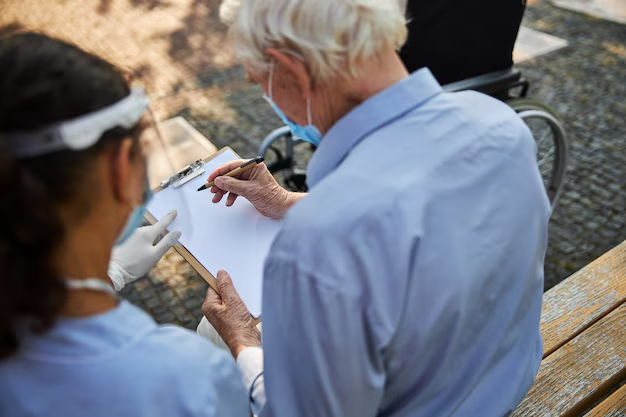Understanding Parkinson's: The Five Stages You Need to Know
Parkinson's disease is a progressive nervous system disorder that affects movement. It develops gradually, sometimes starting with a barely noticeable tremor in just one hand. Knowing the five stages of Parkinson's can be crucial for patients, families, and caregivers to understand and manage the disease effectively.
Stage 1: Very Mild Symptoms
In the first stage of Parkinson’s, symptoms are mild and typically do not interfere with daily activities. Small changes may occur, such as subtle tremors, slight changes in posture, or difficulty with balance. Independent living is still possible, and these symptoms may not even be noticeable to others, unless observed carefully.
Stage 2: Noticeable Symptoms
During the second stage, symptoms become more apparent. Movement begins to be affected on both sides of the body. Daily tasks might take longer to complete due to increased stiffness and difficulty in movement. However, most individuals can continue to live independently, although they may require more time to complete tasks.
Stage 3: Mid-Stage
Stage 3 is considered mid-stage Parkinson's, where loss of balance and slowness of movements are common. The risk of falls increases, and dressing or eating can become challenging. Although symptoms begin to interfere with daily activities, many individuals can continue to lead independent lives, often with adjustments or aids.
Stage 4: Severe Disabilities
By the fourth stage, symptoms are severe and significantly limit personal independence. Standing without assistance might be possible, but movement often requires a walker. At this stage, living independently can be dangerous, and most individuals will need help with daily activities.
Stage 5: Advanced Stage
The final stage of Parkinson's is the most debilitating. Full-time assistance may be necessary due to severe stiffness in the legs that might make it impossible to stand or walk. Non-motor symptoms, such as hallucinations or delusions, may also become more pronounced, requiring comprehensive medical attention.
Understanding each stage of Parkinson's helps in preparing and planning for the future. It's important to explore available resources, whether it's understanding treatment options or learning about different financial assistance programs that can provide valuable support.
Navigating Financial and Educational Support
Dealing with a progressive disease like Parkinson's adds financial strain on many families. Fortunately, there are programs designed to help ease this burden, ensuring that those affected can focus more on treatment and caregiving.
- Medicare and Medicaid: Government programs offering various health services and coverage for eligible individuals.
- Social Security Disability Insurance (SSDI): Provides financial aid to individuals who can no longer work due to a disability.
- Supplemental Security Income (SSI): Offers additional assistance, especially to those with limited income and resources.
- Parkinson's Foundation Grants: Sometimes offers funding for research and provides resources that can help with medical expenses.
- Educational Grants: Supports caregivers and patients in accessing information and resources for better disease management.
- Non-Profit Organization Assistance: Various organizations offer grants and financial aid specifically for Parkinson’s patients and their families.
Navigating the stages of Parkinson’s and the associated financial implications can be overwhelming. However, understanding and accessing financial assistance programs ensures you or your loved ones receive the necessary support at each stage of Parkinson’s, allowing for a focus on health and quality of life.

Related Topics
- Are There Environmental Causes Of Parkinsons
- Can Alcohol Cause Parkinson's
- Can Concussions Cause Parkinson's
- Can Concussions Cause Parkinson's Disease
- Can Dogs Get Parkinson's Disease
- Can Dogs Get Parkinsons
- Can Dogs Have Parkinson's
- Can Dogs Have Parkinson's Disease
- Can Females Get Parkinson Disease
- Can Head Trauma Cause Parkinson's